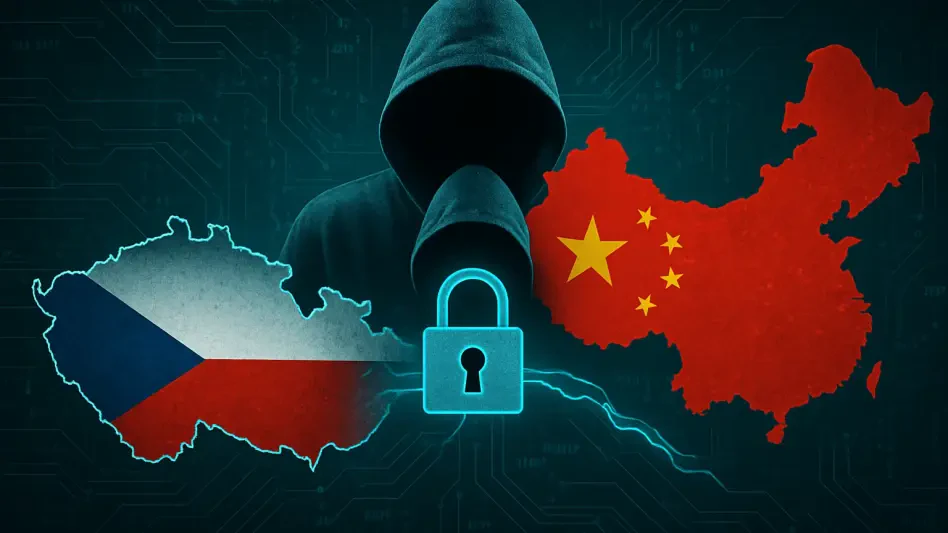What happens when the backbone of a nation’s daily life—energy grids, hospitals, and transportation systems—becomes a gateway for unseen digital threats? In a world increasingly reliant on interconnected technologies, the Czech Republic’s National Cyber and Information Security Agency (NUKIB) has raised a critical red flag about cybersecurity risks tied to data transfers and remote management linked to China. This stark warning, directed at operators of vital infrastructure, paints a chilling picture of potential vulnerabilities that could disrupt entire societies if left unchecked.
Why This Cyber Alert Demands Attention
The significance of this alert cannot be overstated as digital transformation accelerates across the globe. Nations are racing to integrate smart systems into critical sectors like energy, healthcare, and public administration, often without fully grasping the hidden dangers. NUKIB’s cautionary message zeroes in on technologies connected to Chinese suppliers, spotlighting how these systems could expose sensitive data or grant foreign entities control over essential operations. With geopolitical tensions simmering, this issue transcends national borders, tapping into a universal anxiety about safeguarding the digital arteries of modern life.
This warning arrives at a pivotal moment when cyberattacks by state-sponsored actors are no longer theoretical but documented realities. The potential for systemic breaches to cripple economies or endanger public safety has thrust cybersecurity into the spotlight as a top priority. By addressing these specific risks, NUKIB not only alerts Czech stakeholders but also contributes to a broader dialogue on how to balance technological advancement with robust security in an era of global connectivity.
The Hidden Perils of Connected Technologies
At the heart of NUKIB’s concern lies the pervasive use of devices and services—think smart meters, IP cameras, and connected vehicles—that transmit data to servers in China or are managed remotely by suppliers there. Such connectivity, while efficient, opens doors to unauthorized access, potentially allowing foreign entities to manipulate critical systems or harvest confidential information. This technological dependency poses a unique challenge for infrastructure operators who rely on these tools for daily functionality.
Beyond mere technical flaws, the geopolitical landscape adds another layer of risk. China’s legal framework permits government authorities to access data stored within its borders or compel companies to assist in intelligence-gathering efforts. For organizations using these technologies, this creates an unsettling reality where data privacy and system integrity might be compromised, regardless of the supplier’s intentions. The stakes are high, as even a single breach could cascade into widespread disruption.
Concrete evidence amplifies these fears, with NUKIB pointing to attacks by the APT31 group, a cyber entity linked to China’s intelligence services. This group has already targeted Czech government bodies, including a significant breach of the Ministry of Foreign Affairs’ unclassified networks, which are considered part of critical infrastructure. These real-world incidents underscore that the threat is not hypothetical but a pressing concern demanding immediate scrutiny.
Expert Insights and Global Echoes
Authorities at NUKIB have classified this threat as “high,” signaling a probable to very probable chance of cyber incidents stemming from these vulnerabilities. Their assessment aligns with international worries, evident in collaborative efforts with the U.S. Cybersecurity and Infrastructure Security Agency (CISA) to promote transparency through initiatives like the Software Bill of Materials (SBOM). This tool helps organizations dissect supply chains and identify risky components, a step deemed essential by global cybersecurity leaders.
Experts worldwide reinforce NUKIB’s stance, citing APT31’s extensive campaigns against sectors like energy and defense as proof of sophisticated espionage tactics. A cybersecurity analyst from a leading European think tank recently noted that state-sponsored actors often exploit unpatched systems or remote access points, turning mundane devices into espionage tools. These insights, backed by documented breaches, highlight the urgent need for vigilance across borders, as no nation is immune to such pervasive digital threats.
The convergence of national and international perspectives paints a sobering picture. Reports indicate that cyberattacks on critical infrastructure have surged by over 30% in the past two years, with state-linked groups often at the helm. This statistic, paired with NUKIB’s warning, serves as a stark reminder that the digital realm is as much a battlefield as any physical territory, requiring coordinated defense strategies.
Navigating the Threat Landscape
For those managing critical infrastructure, NUKIB offers practical steps to counter these risks without resorting to drastic measures like outright bans. A key recommendation is integrating specific threat assessments into security protocols, particularly for entities governed by the Czech Cybersecurity Act. This involves mapping out dependencies on Chinese-linked systems and pinpointing potential weak spots before they can be exploited.
Beyond institutional measures, there’s a call for broader awareness among individuals and smaller organizations. Everyday users are urged to question where their data resides and who controls remote access, especially with personal gadgets like smartphones or smartwatches that often connect to foreign servers. This heightened scrutiny can serve as a first line of defense, empowering people to make informed choices about the technologies they adopt.
Additionally, embracing transparency tools like SBOM can illuminate hidden risks in software supply chains. By providing a detailed breakdown of software components, this initiative enables decision-makers to avoid blind reliance on third-party systems. Such proactive steps, while complex, are vital for building resilience in a landscape where digital interdependence is both a strength and a vulnerability.
A Path Forward in a Digital Era
Looking back, the urgency of NUKIB’s warning resonated deeply with stakeholders who grappled with the dual nature of technology as both an enabler and a risk. The agency’s focus on Chinese-linked data transfers and remote management shed light on a critical intersection of innovation and security, prompting a reevaluation of how societies protect their most vital systems. Each documented attack and each expert insight reinforced the gravity of the challenge faced.
Reflecting on those discussions, the next steps became clear: nations and organizations needed to prioritize collaborative frameworks, sharing intelligence and best practices to fortify digital defenses. Investing in local technology solutions and stricter vendor vetting processes emerged as actionable strategies to reduce foreign dependencies. Above all, fostering a culture of cybersecurity awareness—where every user, from government officials to everyday citizens, plays a role—stood out as the cornerstone for safeguarding the future against unseen cyber threats.








